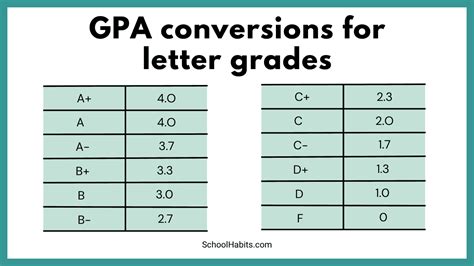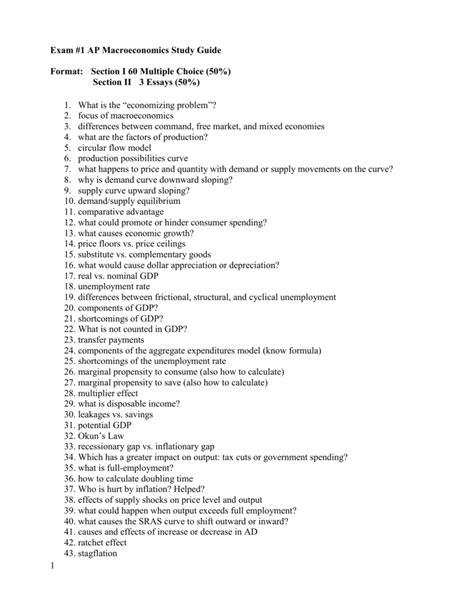The College Board’s Advanced Placement (AP) Macroeconomics exam is a standardized test that evaluates students’ understanding of macroeconomics principles. The exam is typically taken by high school students who are seeking college credit or placement in advanced-level economics courses.

The AP Macroeconomics exam format has undergone several changes over the years. The most recent update was in 2019, when the exam was redesigned to reflect the latest changes in the field of economics.
The current AP Macroeconomics exam is divided into two sections:
- Multiple Choice (60% of the exam): The multiple-choice section consists of 60 questions that cover all of the major topics on the exam. Students have 1 hour and 30 minutes to complete this section.
- Free Response (40% of the exam): The free-response section consists of three questions that require students to demonstrate their understanding of macroeconomic concepts and their ability to analyze economic data. Students have 1 hour and 30 minutes to complete this section.
The AP Macroeconomics exam is scored on a scale of 1-5. A score of 3 or higher is considered passing.
Here is a breakdown of the topics covered on the AP Macroeconomics exam:
- Macroeconomic Principles: This topic covers the basic concepts of macroeconomics, including the circular flow of income, inflation, unemployment, and economic growth.
- National Income and Price Level: This topic covers the measurement of national income and output, the factors that affect aggregate demand and aggregate supply, and the relationship between inflation and unemployment.
- Fiscal Policy: This topic covers the use of government spending and taxes to influence the economy.
- Monetary Policy: This topic covers the use of monetary policy by the central bank to influence the economy.
- International Trade and Finance: This topic covers the theory of international trade, the balance of payments, and the foreign exchange market.
Here are some tips for preparing for the AP Macroeconomics exam:
- Start studying early. The AP Macroeconomics exam covers a lot of material, so it’s important to start studying early to give yourself enough time to learn the material and practice applying it.
- Use a variety of study materials. There are a number of different study materials available for the AP Macroeconomics exam, including textbooks, review books, and online resources. Use a variety of materials to keep your studying interesting and to make sure you’re covering all of the material that will be on the exam.
- Take practice tests. Practice tests are a great way to assess your understanding of the material and to identify areas where you need to improve. There are a number of practice tests available online and in review books.
- Get help from a teacher or tutor. If you’re struggling with a particular topic, don’t hesitate to ask for help from a teacher or tutor. A teacher or tutor can help you understand the material and develop strategies for answering the questions on the exam.
By following these tips, you can increase your chances of success on the AP Macroeconomics exam.
Keywords
- AP Macroeconomics
- AP Macro Exam
- Macroeconomics
- Economics
- College Board
Tables
Table 1: AP Macroeconomics Exam Format
| Section | Questions | Time |
|---|---|---|
| Multiple Choice | 60 | 1 hour 30 minutes |
| Free Response | 3 | 1 hour 30 minutes |
Table 2: AP Macroeconomics Exam Topics
| Topic | Percentage of Exam |
|---|---|
| Macroeconomic Principles | 30% |
| National Income and Price Level | 30% |
| Fiscal Policy | 20% |
| Monetary Policy | 15% |
| International Trade and Finance | 5% |
Table 3: AP Macroeconomics Exam Scores
| Score | Performance |
|---|---|
| 5 | Extremely well qualified |
| 4 | Well qualified |
| 3 | Qualified |
| 2 | Possibly qualified |
| 1 | No recommendation |
Table 4: AP Macroeconomics Exam Preparation Tips
| Tip | Description |
|---|---|
| Start studying early | Give yourself enough time to learn the material and practice applying it. |
| Use a variety of study materials | Use textbooks, review books, and online resources to keep your studying interesting and comprehensive. |
| Take practice tests | Assess your understanding of the material and identify areas where you need to improve. |
| Get help from a teacher or tutor | Ask for help from a teacher or tutor if you’re struggling with a particular topic. |
FAQs
1. What is the AP Macroeconomics exam?
The AP Macroeconomics exam is a standardized test that evaluates students’ understanding of macroeconomics principles. The exam is typically taken by high school students who are seeking college credit or placement in advanced-level economics courses.
2. What is the format of the AP Macroeconomics exam?
The AP Macroeconomics exam is divided into two sections: multiple choice and free response. The multiple-choice section consists of 60 questions that cover all of the major topics on the exam. The free-response section consists of three questions that require students to demonstrate their understanding of macroeconomic concepts and their ability to analyze economic data.
3. How is the AP Macroeconomics exam scored?
The AP Macroeconomics exam is scored on a scale of 1-5. A score of 3 or higher is considered passing.
4. What are some tips for preparing for the AP Macroeconomics exam?
Some tips for preparing for the AP Macroeconomics exam include:
- Start studying early.
- Use a variety of study materials.
- Take practice tests.
- Get help from a teacher or tutor.
5. What are some of the topics covered on the AP Macroeconomics exam?
Some of the topics covered on the AP Macroeconomics exam include:
- Macroeconomic Principles
- National Income and Price Level
- Fiscal Policy
- Monetary Policy
- International Trade and Finance
6. What is the difference between microeconomics and macroeconomics?
Microeconomics is the study of the behavior of individual entities, such as households and firms. Macroeconomics is the study of the behavior of the economy as a whole, including topics such as inflation, unemployment, and economic growth.
7. What are some of the career options for students who study macroeconomics?
Students who study macroeconomics can pursue a variety of careers, including:
- Economist
- Financial analyst
- Market researcher
- Policy analyst
- Teacher
8. What are some of the challenges facing macroeconomists?
Some of the challenges facing macroeconomists include:
- Predicting economic downturns
- Managing inflation
- Reducing unemployment
- Promoting economic growth
